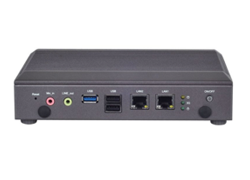Network service interruptions are primary concern for remote offices, says Infoblox report

There is an urgent need to simplify edge services at remote branch offices, according to new research from Infoblox Inc., a specialist in Secure Cloud-Managed Network Services.According to a global survey by the company, network reliability at remote locations is lacking: 75% of network administrators experience network interruptions several times a year or more frequently, and 99% of businesses report suffering business impact. What’s more, 49% of companies require three or more hours to resolve remote office network outages.
To address this need, Infoblox announced the launch of BloxOne DDI, the industry’s first cloud-managed DDI (DNS, DCHP and IPAM) offering for remote and branch office networks. BloxOne DDI provides a flexible, scalable, and reliable platform that helps simplify IT anywhere at any scale. As a virtualised and cloud-managed DDI platform, BloxOne DDI enables enterprises to fully realise the benefits of SD-WAN, bringing simplified remote management to branch offices, increased uptime and reliability over remote locations and optimised DNS systems for hosted applications in the cloud.
“DDI is a critical functionality for network connections, whether in the data centre or in the branch. However, too often, organisations are quick to adopt SD-WAN without considering how their DDI platforms must evolve as well,” said Brandon Butler, senior research analyst, Enterprise Networks at IDC. “A new lightweight DDI solution is needed that allows organisations to execute DDI functions in the branch. This allows DNS queries to be resolved locally, without having to backhaul to a datacentre. It allows enterprises to get the full value of their SD-WAN deployments and provides direct connections to public cloud platforms.”
As workforces evolve to include more remote and branch offices, and enterprises continue to undergo digital transformations, enterprises are increasingly relying on cloud-hosted services for critical workloads and outgrowing traditional WAN architectures. SD-WAN can be a simple and cost-effective way to provide enterprises with reliable and optimised connectivity to cloud based applications such as Office 365, but many fail to upgrade their network infrastructure from legacy systems.
“More organisations are beginning to see the value in SD-WAN deployments, but too many are failing to take full advantage of the technology,” said Kanaiya Vasani, executive vice president of products and corporate development at Infoblox. “According to our report, 71% of network administrators surveyed have or plan to deploy SD-WAN. With BloxOne DDI, enterprises can make full use of SD-WAN’s potential by modernising their DDI platform.”

Infoblox’s report also highlights the need for a platform that makes branch network management easier. Survey respondents reported several challenges around managing a highly distributed network with numerous remote locations:
- 55% of network administrators reported struggling with keeping all network devices properly updated
- 48% reported not having enough personnel on site
- And 43% of respondents cited a lack of resources to properly manage the network
“As a large global operation, we have offices and branch locations throughout the world from manufacturing plants, parts and service centres, to research and development offices. There is a tremendous amount of communication taking place on the network from the branch location back to the corporate data centre. We need to have reliable network performance. Any network disruption can result in a substantial loss of money and time. BloxOne DDI has enabled us to gain that critical network reliability at the branch.” – Network Security Architect, a large multinational automotive manufacturer.
BloxOne DDI gives customers a reliable, simple and flexible high-performance connection to enterprise and SaaS-based applications with centralised management and reporting.
- Enhanced end user experience: Local DNS name resolution of endpoints helps to ensure that the closest entry points for SaaS applications are being used for user connections resulting in faster response time.
- Cloud managed automation: Zero-touch provision automates the provisioning thousands of remote sites and provides centralised policy control – eliminating per site error-prone manual methods.
Comment on this article below or via Twitter @IoTGN
